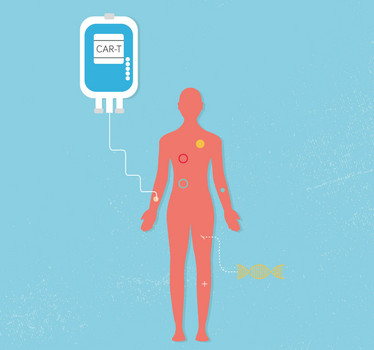
Reinforcing Regulations
How an understanding of the regulatory framework is essential for the future generations of cell and gene therapy professionals
With Karen Nichols, VP Regulatory and Quality at Magenta Therapeutics, and Chief Regulatory Officer at ISCT.
What has led you to your role at ISCT?

I am a patent attorney by training, and my background is in biology. I started with ISCT in the mid-2000s on the legal Regulatory Affairs Committee – work has simply expanded since then.
In 2016, I took on the new position of Chief Regulatory Officer. We created this role within the organization to demonstrate our commitment to the regulatory component of cell and gene therapies – you can’t get a drug to market without having a regulatory pathway that guides it to that end. The regulatory space is one of my passions, so I get a little enthusiastic.
What is your take on ISCT’s education and training initiative?
We give a high degree of visibility to the care of those just entering the cell and gene therapy workforce. They have mentors – giants in this industry – to guide them, and in turn they will pass their own skills back to future generations.
The Cell Therapy Training Course is really important to ISCT. Of course, the core reason for the program is that it provides technical skills. But it also provides the participants with an understanding of the larger environment of which they are a part; they need to develop skills not only in manufacturing, but also a regulatory knowledge base, and an understanding of everything from supply chain to commercialization.
As the industry advances, we will develop this training further to meet the key needs of our members. We also have a rich offering of annual meetings and conferences. People come to see and hear what’s advancing within this rapidly changing field. Again, these don’t just present a technical perspective, but also offer insights into what the regulators might be thinking.

How are regulators coping with such a fast-moving field?
The field is advancing rapidly. Researchers are doing novel work at a level that the regulators may be unfamiliar with – but their broad view of submissions and approvals invariably means there are few things that they have not seen or heard of before.
In the US, the legislative changes from the 21st Century Cures Act have driven and supported regulatory optimization. But there is also acceleration across different technologies that, in turn, the regulatory environment needs to adapt to or learn how to approach.
We also have different peripheral technologies – offshoots from the cell therapy space – that create novel regulatory situations to resolve. Humans are very imaginative creatures – as long as we have our wits and our science, we will continue to advance – and change is likely to follow an exponential trajectory!
How do you work with regulators?
There are certain formal pathways by which you engage with a regulator. At the same time, we have opportunities to meet regulators at events, giving us the chance for more informal and broad conversations. We have a very privileged relationship – and we don’t take it for granted. Regulators have many years of experience, and we learn a lot from them.
In a nutshell, the regulatory aspect is essential to industry development; it provides the crucial guidance and the guardrails. And that allows the technologies to demonstrate their safety and efficacy for broader application into humans.
Our network of legal and regulatory affairs committees includes North America, Europe, Australia, and New Zealand. Each of these committees has local relationships depending on the initiatives that might be underway.
From a regulatory perspective, what differentiates cell and gene therapies from more traditional therapies?
Fundamentally, it’s the fact that we are dealing with “living drugs.”
Small molecules may specifically interact with a genetic site or target in the body. You know pretty much what they will do based on the drug’s pharmacokinetic and pharmacodynamic properties.
We have a product with a life of its own. We are harnessing or modifying that, which drives a different mindset in terms of how you look at the regulatory process.
Can you envisage the regulatory considerations for a treatment that uses a machine to process a patients’ cells in a hospital setting?
The concept of bedside treatment using devices that select and return cells as therapy is not far in the future; people are talking about it now. I would say from a regulatory perspective it is really a question of conscience.
The equipment and the process needs to operate in a demonstrable, validated way that delivers the service as safely as possible. Risk to benefit is really a common sense question. What do you need to do to make sure the patient is properly and safely treated using the technology?
From a regulatory perspective, would such a concept be classed as a device or as a therapy?
It would likely be classified as a device rather than a therapy – there’s a precedent. But such topics are a constant source of debate. At the core of the debate are the autologous cells themselves and the degree to which they have been modified or manipulated as a result of this procedure.
Understanding the technology, the biological material, and the purpose and integration for use all come together for a regulatory person. They have to ask many questions to determine what makes the most sense.
Is the industry on the right (regulatory) track to move to the next level?
The core principles will remain the same – the safety and efficacy must be demonstrated before you can put a product on the market commercially. None of that will change.
Wherever the science goes, the regulatory environment needs to follow – and then continue to adapt as resulting technologies evolve further.
What’s next for the ISCT education and training initiative?
As a nonprofit organization, our job is to do our best to prepare our members and the industry as a whole. Subsequent generations are going to change the face of this industry, or evolve pieces of it.
ISCT is a forward-thinking group and I think we try to drive as much of this as we can – whether that means interacting directly with regulators, or getting recent ex-regulators to bring their perspectives into our work. We try to stay current and we try to continue evolving knowledge – again, not only for our members, but also by interacting with agencies in a way that helps them to become more aware of industry trends and needs.

Over the course of my Biomedical Sciences degree it dawned on me that my goal of becoming a scientist didn’t quite mesh with my lack of affinity for lab work. Thinking on my decision to pursue biology rather than English at age 15 – despite an aptitude for the latter – I realized that science writing was a way to combine what I loved with what I was good at.
From there I set out to gather as much freelancing experience as I could, spending 2 years developing scientific content for International Innovation, before completing an MSc in Science Communication. After gaining invaluable experience in supporting the communications efforts of CERN and IN-PART, I joined Texere – where I am focused on producing consistently engaging, cutting-edge and innovative content for our specialist audiences around the world.



















